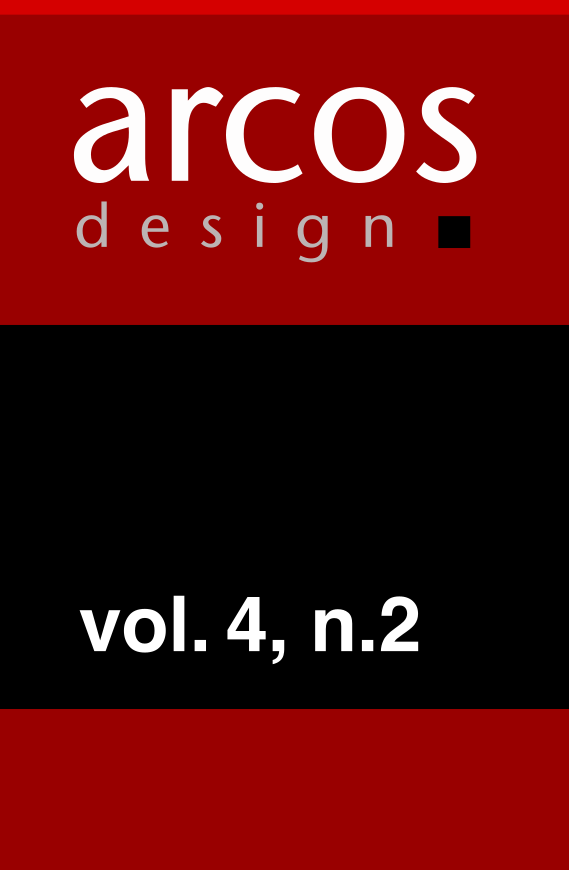Além da função, o uso
Palavras-chave:
uso, teoria do design, metodologia do designResumo
Este artigo defende a idéia que o uso, enquanto dimensão autônoma da vida dos produtos, permanece impensado pelo design. A representação de um usuário dotado de necessidades específicas continua orientando o trabalho de projeto, que se esforça em otimizar sua relação – predefinida – com o artefato. Entretanto, outras abordagens são possíveis. Sugerimos que a criação de possibilidades de uso pode ser um objetivo do design, tratando a inventividade do usuário como um desafio à metodologia do design.
Downloads
Referências
AKRICH, M. Les utilisateurs, acteurs de l’innovation. Education permanente, n°134, 1998,
pp.79-89.
BRANZI, A. Le design italien “La casa calda”. Paris: L’équerre, 1985.
CAGE, J. De segunda a um ano. São Paulo: Hucitec, 1985.
CERTEAU, M. de A invenção do cotidiano. 1. Artes de fazer. Petrópolis: Vozes, 2001.
DAVIS, M. Cidade de quartzo. São Paulo: Página aberta, 1993.
DENIS, R. C. Uma introdução à história do design. São Paulo: Edgard Blücher, 2000.
GARRET, J.J. The elements of user experience. Indianapolis: New Riders, 2002.
GIBSON, J.J. The ecological approach to visual perception. Hillsdale: Lawrence Erlbaum
Associates, 1986.
GRILLO, P.J. Form, function & design. New York: Dover Publications, 1975 (1960).
KASPER, C.P. O uso como invenção. Anais do 4o CIPED, Congresso Internacional de Pesquisa em Design, Rio de Janeiro, 2007.
________. Desviando funções. Nada, Lisboa, No 5, 2005, pp. 72-77.
LE CORBUSIER. A arte decorativa. São Paulo: Martins Fontes, 1996.
LINDINGER, H. Ulm design. Cambridge: Mit Press, 1991.
MARCUS, G. H. Functionalist design. Munich: Prestel, 1995.
MARGOLIN, V. Getting to know the user. Design Studies,18, 1997, pp. 227-236.
MILS, L. Value analysis. New York, McGraw-Hill, 1961.
NORMAN, D. The psychology of everyday things. New York: Basic Books, 1988.
PAPANEK, V. Design for the real world. London: Thames & Hudson, 1986 (1971).
PELBART, P.P. Vida capital. São Paulo: Iluminuras, 2003.
PHEASANT, S. Bodyspace. London: Taylor & Francis, 1997.
REDSTRÖM, J. Towards user design? On the shift from object to user as the subject of design. Design Studies, Vol 27 No. 2 March 2006. pp. 123-139.
RICHARDSON, A. The death of the designer. Design Issues, Vol. IX, No 2, Spring 1993, pp.34-43.
SCHILDKROUT, E.; PIDO, D.K. Serendipity, practicality and aesthetics: the art of recycling in personal adornment. In: CERNY, C.; SERIFF, S. Recycled, re-seen: folk art from the global scrap heap. New York: Harry N. Abrams, 1996.
SHAH, S. K . Open beyond software. (2005) Versão online disponível em: <http://userinnovation.mit.edu/papers/Shah%202005%20-
%20Open%20Beyond%20Software.pdf> (acesso 10/06/2009)
SIU, K. W. M. Users' Creative Responses and Designers' Roles. Design Issues, 19, no2, Spring 2003, pp. 64-73.
Downloads
Publicado
Como Citar
Edição
Seção
Licença

Este trabalho está licenciado sob uma licença Creative Commons Attribution-NonCommercial-ShareAlike 4.0 International License.
Autores que publicam nesta revista concordam com os seguintes termos:
- Os Direitos Autorais dos artigos publicados na revista Arcos Design pertencem ao(s) seu(s) respectivo(s) autor(es), com os direitos de primeira publicação cedidos à Arcos Design com o trabalho simultaneamente licenciado sob uma Licença Creative Commons CC BY-NC-SA 4.0, a qual permite o compartilhamento do trabalho com reconhecimento da autoria e publicação inicial nesta revista. Para mais informações ver: https://creativecommons.org/licenses/by-nc-sa/4.0/
- O(s) autor(es) tem/têm autorização para assumir contratos adicionais separadamente, para distribuição não-exclusiva da versão do trabalho publicada nesta revista (ex.: publicar em repositório institucional ou como capítulo de livro), com reconhecimento de
autoria e publicação inicial nesta revista. - Autores têm permissão e são estimulados a publicar e distribuir seu trabalho online (ex.: em repositórios institucionais ou na sua página pessoal) a qualquer ponto antes ou durante o processo editorial, já que isso pode gerar alterações produtivas, bem como aumentar o impacto e a citação do trabalho publicado.


